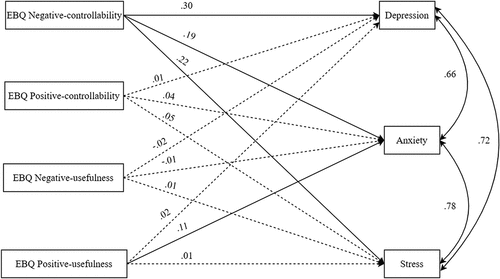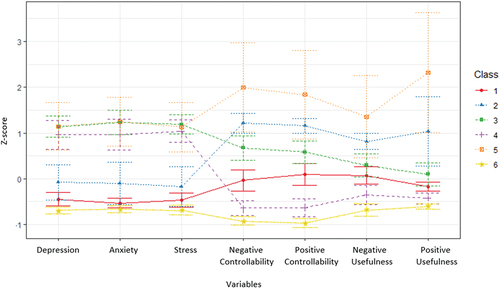Figures & data
Table 1. Descriptive statistics, reliability statistics, and Pearson correlation matrix for demographic variables, emotion belief variables, and symptoms of depression, anxiety, and stress.
Figure 1. Path analysis modelling the relationship between emotion beliefs and depression, anxiety, and stress.

Table 2. Results of path analysis predicting depression, anxiety, and stress symptoms.
Figure 2. Visual representation of the six-profile solution from the latent profile analysis.

Supplemental Material
Download MS Word (14.3 KB)Data availability statement
Data will be made available on request by contacting the corresponding author.
